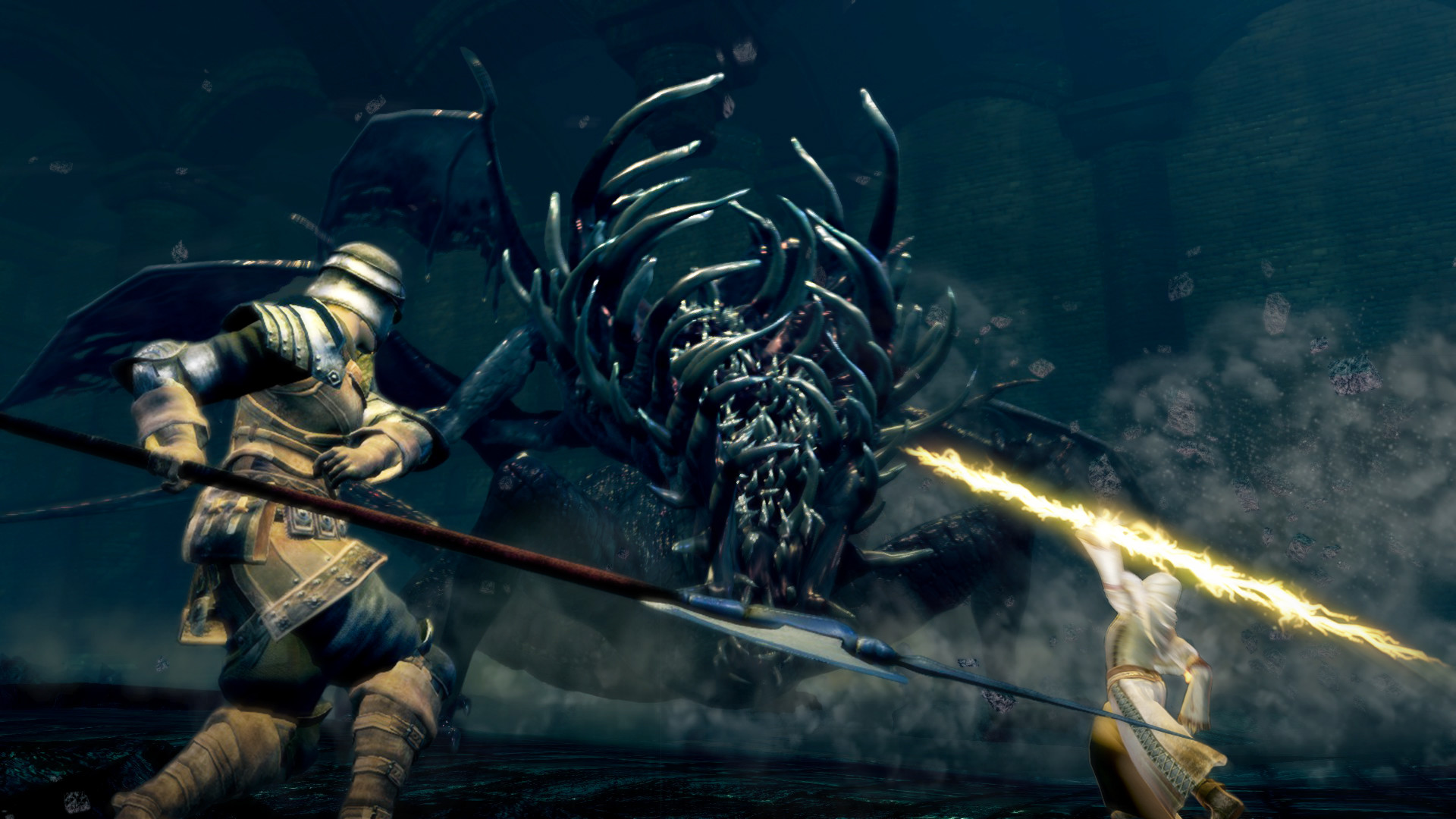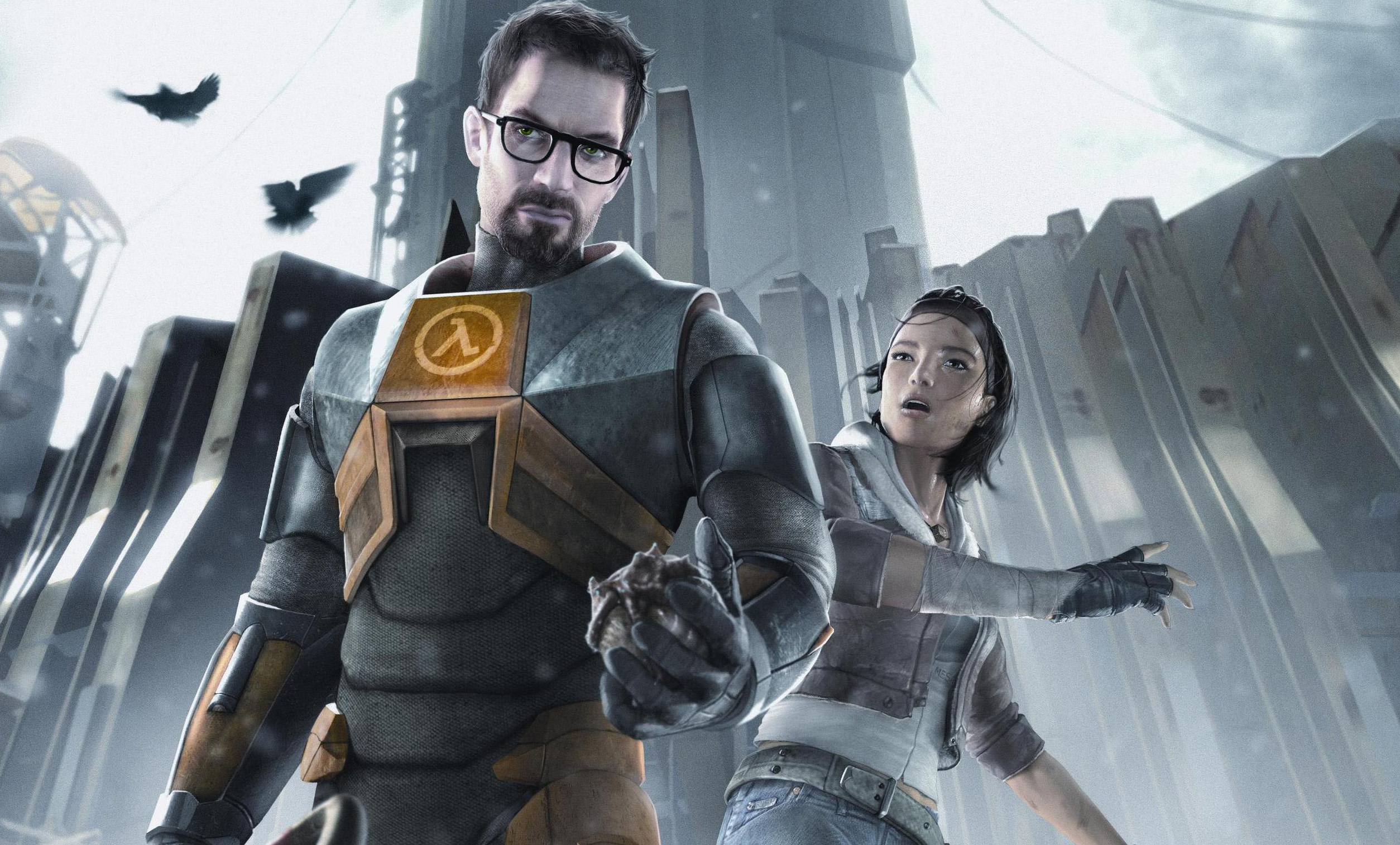Dark Souls 2 PC port: mod god Durante's verdict

In 2012, Peter "Durante" Thoman wrote the popular mod DSfix for Dark Souls: Prepare to Die on PC, fixing its locked 1024x720 resolution and other issues. In 2013, he released a similar fix for Deadly Premonition . We asked Durante to analyze the PC port of Dark Souls 2 in a series of articles.
After an initial outing on PC which was barely serviceable—rendering at 1024x720, locked at 30 FPS with unusable mouse controls—From Software and Namco Bandai have a lot to prove with this sequel. For Dark Souls 2, PC was reportedly considered a major target platform from the start. In this article, I'll first investigate the technical quality of the port compared to Dark Souls: Prepare to Die Edition and the console versions of Dark Souls 2. Then I'll have a closer look at the options included in the game and analyze their impact.
A Good Port
Dark Souls 2 on PC is a massively improved effort compared to its predecessor. It renders at any resolution a given system supports, its framerate varies smoothly up to 60 FPS, it performs well even on modest systems—more on that topic later—and it comes with a wealth of graphical options. The following table summarizes most of the improvements:

The most egregious oversights in the first port—resolution and framerate—are completely solved. Even less pronounced issues like surround sound problems and faulty keyboard/mouse controls are fixed. Small touches make it obvious that the game was truly developed with PC in mind: for example, the EULA which shows up when you first start the game can be scrolled with the mouse wheel.
A common fear among gamers was that From would make good on their promise of 1920x1080 but stop there instead of supporting truly arbitrary rendering resolutions. Something similar happened recently with the otherwise excellent port of Metal Gear Rising: Revengeance. Dark Souls 2 has no such limit.
Assessing the Assets
One big question has loomed over the PC port of Dark Souls 2: how different will it be from the console versions? Would the improvements be restricted to resolution and framerate, or would there be changes to the game's textures and models?

In the image above, the game data file archives (*.bdt) for the PC version of the game are shown. Note that their total size is ~10.7 GB. On the other hand, the following table shows the size of the data files for the PS3 version of the game – this was determined by inspecting a disc dump of the PS3 data:
The biggest gaming news, reviews and hardware deals
Keep up to date with the most important stories and the best deals, as picked by the PC Gamer team.

Note that the total size in this case is ~5.7 GB, and that the files with the “ Hq ” prefix in the PC version have no equivalent in the PS3 version.
Previously, PC gamers were sometimes disappointed when, after large downloads, a given size discrepancy compared to console versions was entirely down to higher-quality movie files or additional localization data. This is not the case for Dark Souls 2: there is only one separate pre-rendered movie, and it is actually smaller in the PC version (likely due to better compression). The localization and font data only takes up around 30 MB in total, and is in fact the same on PC and PS3. In short, everything indicates that the 5 GB difference is caused by higher quality asset data, and a preliminary analysis of the content of these archive files confirms this assumption.
In addition to these main game asset files, the PC version includes a “sfx9999 hq res.ffxbnd” file in the “sfx_hq” folder, which appears to store higher-resolution assets for special effects (such as torch light or particles). It is also about twice as large as the standard “sfx9999res.ffxbnd” file, which is the same on both PC and consoles.
Performance
Before jumping into the options, a quick word on performance. I originally intended to provide measurements and graphs here, but Dark Souls 2 generally performs so well on my system that there's no need. With all in-game settings maximized and rendering at 2560x1440, I never noticed a single drop below 60 FPS on my PC (equipped with a Core i7 920 CPU and Geforce GTX770 GPU). In fact, the GPU was generally below 60% loaded in order to maintain that framerate. Even medium-range systems should easily maintain a solid framerate, particularly at the more common 1920x1080 resolution.
Another relevant aspect of game performance which is independent of framerates is the length of loading times, which is particularly relevant for Dark Souls 2 in light of their distracting duration in the console versions. The PC version, with maximized settings, consistently loads in 3-4 seconds from my traditional 7200 RPM HDD, and presumably installing the game to an SSD could further lower these times.












